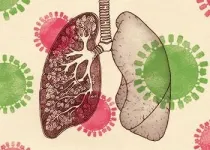INFORMATION:
This study is the result of a large collaboration of 24 interdisciplinary researchers. First co-authors are Zamora and Christopher Ramsden, MD, a researcher with the National Institute on Aging and former UNC clinical fellow. Sixteen of the co-authors are affiliated with the University of North Carolina.
This project was funded in part by a grant from the National Center for Complementary and Integrative Health (NCCIH), National Institutes of Health (NIH).
Changing consumption of certain fatty acids can lessen severity of headaches
A new study shows how a change in diet based on certain classes of fatty acids decreased headaches in patients over a 16-week period
2021-07-02
(Press-News.org) CHAPEL HILL, NC - Migraine is one of the largest causes of disability in the world. Existing treatments are often not enough to offer full relief for patients. A new study published in The BMJ demonstrates an additional option patients can use in their effort to experience fewer migraines and headaches - a change in diet.
"Our ancestors ate very different amounts and types of fats compared to our modern diets," said co-first author Daisy Zamora, PhD, assistant professor in the UNC Department of Psychiatry in the UNC School of Medicine. "Polyunsaturated fatty acids, which our bodies do not produce, have increased substantially in our diet due to the addition of oils such as corn, soybean and cottonseed to many processed foods like chips, crackers and granola."
The classes of polyunsaturated fatty acids examined in this study are omega-6 (n-6) and omega-3 (n-3). Both have important functions within our body, but need to be in balance, as n-3 fatty acids have been shown to decrease inflammation and some derivatives of n-6 have been shown to promote pain. However, due to the amount of processed food consumed today, most people in the U.S. are eating substantially more n-6 and fewer n-3 fatty acids.
To see whether the amount of these fatty acids in a person's diet could impact pain from headaches, 182 patients currently diagnosed with and seeking treatment for migraines were enrolled in this randomized, controlled trial, led by Doug Mann, MD, professor of Neurology and Internal Medicine in the UNC School of Medicine. In addition to their current treatments, patients adhered to one of three diets for 16 weeks: a control diet that maintained the average amount of n-6 and n-3 fatty acids that a person living in the U.S. consumes, a diet that increased n-3 and maintained n-6 fatty acids, and a diet that increased n-3 and decreased n-6 fatty acids. Participants were provided with 2/3 of their daily food requirements, and were also given an electronic diary to record how many hours each day they had headache pain.
"Participants seemed highly motivated to follow these diets due to the amount of pain they were experiencing," said Beth MacIntosh, MPH, RD, clinical nutrition manager for the UNC Metabolic and Nutrition Research Core.
"The results are quite promising," Zamora said. "Patients who followed either diet experienced less pain than the control group. Those who followed the diet high in n-3 and low in n-6 fatty acids experienced the biggest improvement."
Participants reported fewer days a month with headaches, and some were able to decrease the amount of medication they needed for their pain. However, participants did not report a change in quality of life.
"I think this modification in diet could be impactful," Zamora said. "The effect we saw for the reduction of headaches is similar to what we see with some medications. The caveat is that even though participants did report fewer headaches, some people did not change their perception of how headaches affected them."
"This study specifically tested n-3 fatty acids from fish and not from dietary supplements," said study co-author Keturah Faurot, assistant professor of Physical Medicine and Rehabilitation, and assistant director of the Program on Integrative Medicine. "Our findings do not apply to supplement use."
Zamora says the biochemical hypothesis of how certain fatty acids affect pain applies to a wide variety of chronic pain. She and her colleagues are currently working on a new study to test diet modification in other pain syndromes.
ELSE PRESS RELEASES FROM THIS DATE:
Air pollution during pregnancy may affect growth of newborn babies
2021-07-02
According to studies in recent years, air pollution affects the thyroid. Thyroid hormones are essential for regulating foetal growth and metabolism, and play an important role in neurological development. Thyroxine (T4) is the main thyroid hormone that is circulating and the thyroid-stimulating hormone is TSH. At 48 hours newborn babies undergo a heel prick test in which thyroxine and TSH levels in the blood are measured. In fact, if the balance of these thyroid hormones is not right, the risk of developing serious diseases increases. That is why, "this study set out to analyse the relationship between atmospheric pollution during pregnancy and the level ...
Big data are no substitute for personal input in surveys
2021-07-02
When the analysis of digital data reaches its limits, methods that focus on observations made by individuals can be useful. In contexts such as the coronavirus pandemic, a method called human social sensing can elicit information that is difficult to obtain from digital trace data. Prof. Frauke Kreuter at Ludwig-Maximilians-Universitaet (LMU) in Munich is now using this method with the global "Covid Trends & Impact Survey" to predict the course of the pandemic.
Despite today's researchers in the social sciences having access to historically unparalleled amounts of data, many aspects of contemporary social developments have proven difficult to predict. National elections and the ongoing coronavirus pandemic are highly visible examples ...
Inside the lungs, a new hope for protection against flu damage
2021-07-02
The seasonal flu kills up to 600 000 people a year worldwide and has a century-long history of pandemics. Examples include the Spanish flu in the late 1910's or the H1N1 in 2009, which together claimed more than 50 million lives. "The way the stage is set tells us that it is not a matter of if but rather of when there will be a next pandemic. And preparing ourselves for that demands intensive fundamental research and constant accumulation of knowledge about these viruses and the diseases they cause", says Maria João Amorim, IGC principal investigator and leader of the team that conducted the study.
When a virus like influenza enters our lungs, it is quickly faced with cocktails of ...
New insights into the assembly of photosynthetic membranes
2021-07-02
An international study has elucidated the structure of a protein that is required for the assembly and stability of photosynthetic membranes.
Plants, algae and cyanobacteria convert carbon dioxide and water into biomass and oxygen with the aid of photosynthesis. This process forms the basis of most forms of life on Earth. Global warming is exposing photosynthetic organisms to increasing levels of stress. This reduces growth rates, and in the longer term presents a threat to food supplies for human populations. An international project, in which Ludwig-Maximilians-Universitaet ...
Neurobiology: How mice see the world
2021-07-02
Researchers based in Munich and Tuebingen have developed an open-source camera system that images natural habitats as they appear to rodents.
During the course of evolution, animals have adapted to the particular demands of their local environments in ways that increased their chances of survival and reproduction. This is also true of diverse aspects of the sensory systems that enable species to perceive their surroundings. In the case of the visual system, these adaptations have shaped features such as the positioning of the eyes and the relative acuity of different regions of the retina.
However, our knowledge of the functional evolution of visual systems in mammals has remained relatively sparse. "In the past 10 or 15 years, the mouse has become the favored model ...
New clinical indicators discovered in transplant patients with COVID-19
2021-07-02
Elisa Cordero, a doctor at the Virgen del Rocío University Hospital, researcher at the Institute of Biomedicine of Seville (IBiS) and professor in the Department of Medicine at the University of Seville, led a study involving researchers from 12 Spanish hospitals to study the clinical characteristics and facilitate the prognosis of solid organ transplant recipients with COVID-19.
The study provides a more precise description of the complications caused by Covid-19 in organ transplant recipients and has provided useful clinical indicators to identify the disease early. This makes it possible to determine therapeutic and care measures ...
Smart technology is not making us dumber
2021-07-02
There are plenty of negatives associated with smart technology -- tech neck, texting and driving, blue light rays -- but there is also a positive: the digital age is not making us stupid, says University of Cincinnati social/behavioral expert Anthony Chemero.
"Despite the headlines, there is no scientific evidence that shows that smartphones and digital technology harm our biological cognitive abilities," says the UC professor of philosophy and psychology who recently co-authored a paper stating such in Nature Human Behaviour.
In the paper, Chemero and colleagues at the University of Toronto's Rotman School of ...
Why does Mercury have such a big iron core? Magnetism!
2021-07-02
A new study disputes the prevailing hypothesis on why Mercury has a big core relative to its mantle (the layer between a planet's core and crust). For decades, scientists argued that hit-and-run collisions with other bodies during the formation of our solar system blew away much of Mercury's rocky mantle and left the big, dense, metal core inside. But new research reveals that collisions are not to blame--the sun's magnetism is.
William McDonough, a professor of geology at the University of Maryland, and Takashi Yoshizaki from Tohoku University developed a model showing ...
Color and flavor -- pigments play a role in creating tasty tomatoes
2021-07-02
Ibaraki, Japan - The flavor of a tomato is an interaction between its taste and aroma. Now, researchers from Japan and the United States have revealed that the pigments that determine the colors of tomatoes also affect their flavor.
In a study published this month, researchers from University of Tsukuba developed a new method to rapidly measure the pigment profiles of tomatoes and used the technique to explore how pigments affect the taste and aroma of different tomato varieties.
The color of tomatoes is produced by combinations of different types of pigments, including carotenoids and chlorophylls. These pigments can also affect the accumulation of flavor-related compounds such as sugars, which affect the taste of tomatoes, and volatile ...
Same dance, different species: How natural selection drives common behavior of lizards
2021-07-02
A surprising study by UNSW on the behaviour of unrelated lizards in very different parts of the world has demonstrated how evolution can lead to different species learning the same skills.
The study in Ecology Letters documents how the Anolis lizard species in the Caribbean, and the Draco lizard species in Southeast Asia, have solved the challenge of communicating with one another to defend territories and attract mates.
It found males from both species perform elaborate head bob and push up displays, and rapidly extend and retract their often large and conspicuously coloured dewlap, or ...
LAST 30 PRESS RELEASES:
SIMJ announces global collaborative book project in commemoration of its 75th anniversary
Air pollution exposure and birth weight
Obstructive sleep apnea risk and mental health conditions among older adults
How talking slows eye movements behind the wheel
The Ceramic Society of Japan’s Oxoate Ceramics Research Association launches new international book project
Heart-brain connection: international study reveals the role of the vagus nerve in keeping the heart young
Researchers identify Rb1 as a predictive biomarker for a new therapeutic strategy in some breast cancers
Survey reveals ethical gaps slowing AI adoption in pediatric surgery
Stimulant ADHD medications work differently than thought
AI overestimates how smart people are, according to HSE economists
HSE researchers create genome-wide map of quadruplexes
Scientists boost cell "powerhouses" to burn more calories
Automatic label checking: The missing step in making reliable medical AI
Low daily alcohol intake linked to 50% heightened mouth cancer risk in India
American Meteorological Society announces Rick Spinrad as 2026 President-Elect
Biomass-based carbon capture spotlighted in newly released global climate webinar recording
Illuminating invisible nano pollutants: advanced bioimaging tracks the full journey of emerging nanoscale contaminants in living systems
How does age affect recovery from spinal cord injury?
Novel AI tool offers prognosis for patients with head and neck cancer
Fathers’ microplastic exposure tied to their children’s metabolic problems
Research validates laboratory model for studying high-grade serous ovarian cancer
SIR 2026 delivers transformative breakthroughs in minimally invasive medicine to improve patient care
Stem Cell Reports most downloaded papers of 2025 highlight the breadth and impact of stem cell research
Oxford-led study estimates NHS spends around 3% of its primary and secondary care budget on the health impacts of heat and cold in England
A researcher’s long quest leads to a smart composite breakthrough
Urban wild bees act as “microbial sensors” of city health.
New study finds where you live affects recovery after a hip fracture
Forecasting the impact of fully automated vehicle adoption on US road traffic injuries
Alcohol-related hospitalizations from 2016 to 2022
Semaglutide and hospitalizations in patients with obesity and established cardiovascular disease
[Press-News.org] Changing consumption of certain fatty acids can lessen severity of headachesA new study shows how a change in diet based on certain classes of fatty acids decreased headaches in patients over a 16-week period




